Geothermal fields 🢔 Geothermal features 🢔 Geological wonders 🢔 Categories of wonders
Wonder
Hverasvæðið – Hveragerði Geothermal Park
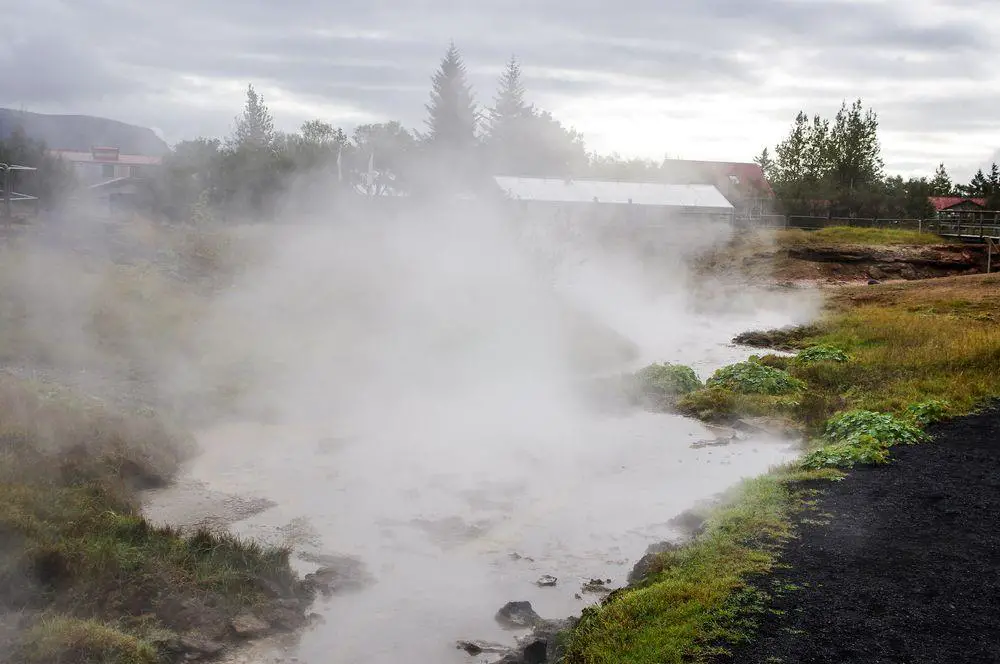
 In short
In short
Today the Hveragerði Geothermal Park is somewhat less impressive, if compared to other geothermal fields around Hveragerði (Hveragerdi) town – it is “civilized” and geothermal energy over the last decades has “traveled” to some other locations nearby. Some time ago this was different: the centre of the present-day Hveragerði was an unusual place with geysers and boiling springs.
 42.3%
42.3%
GPS coordinates
Location, address
Alternate names
Map of the site
If you see this after your page is loaded completely, leafletJS files are missing.
 In detail
In detail
History
Hot springs at the eastern fringe of the Hengill volcanic massif some 40 kilometers from Reykjavik were noticed long ago. In the 20th century here, around the Varmá river, more and more houses appeared.
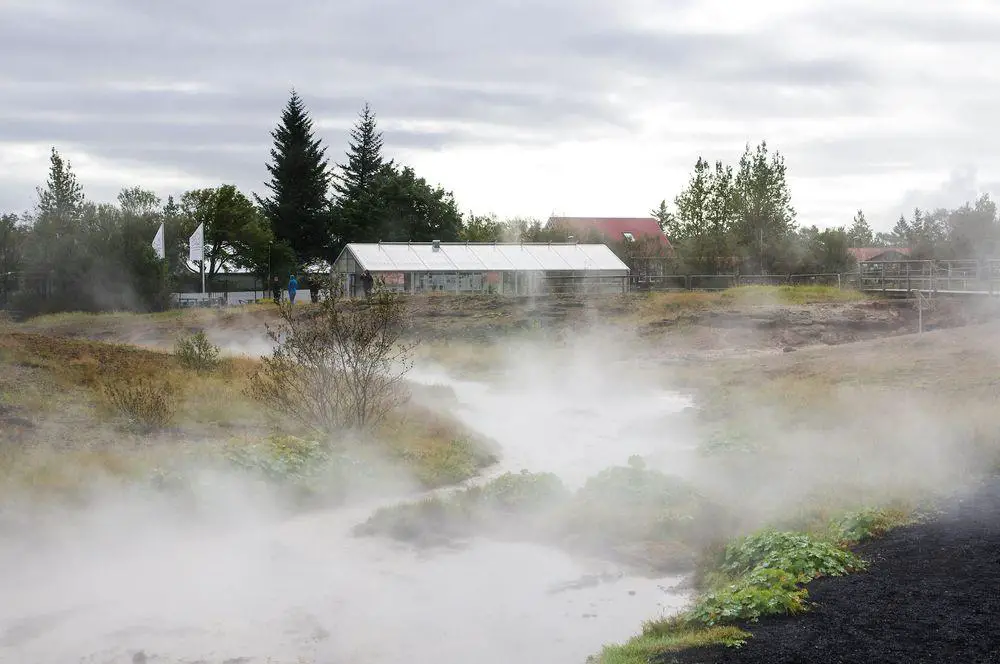
Already in 1929 here was started commercial production of vegetables and in 1930 here was built the first greenhouse, using the energy of Bakkahver – a hot spring which is covered with a pyramidal roof. In 1940 in Hveragerði was mastered the use of geothermal energy from a pipe. Step by step the town and areas around it are turning into a green paradise – people are planting trees and other plants and, well, the climate is changing too.
Today Hveragerði might feel like a little city, with its own resort industry, numerous glowing greenhouses, shops, and more and more greenery.
Geothermal park
The geothermal area in the center of Hveragerði (Hveragerdi) town exists up to this day.
On the 29th of May 2008, a powerful earthquake changed the geothermal fields around Hveragerði – several new fields formed. Meanwhile, in the geothermal park, the hot springs almost disappeared. The nearby hot springs and geysers (see Grýla and Leppaluði borehole) did not change much.
Thus, what some decades were attractive natural landmarks, nowadays sometimes are just muddy holes in the ground. Nevertheless, this still is an interesting area.
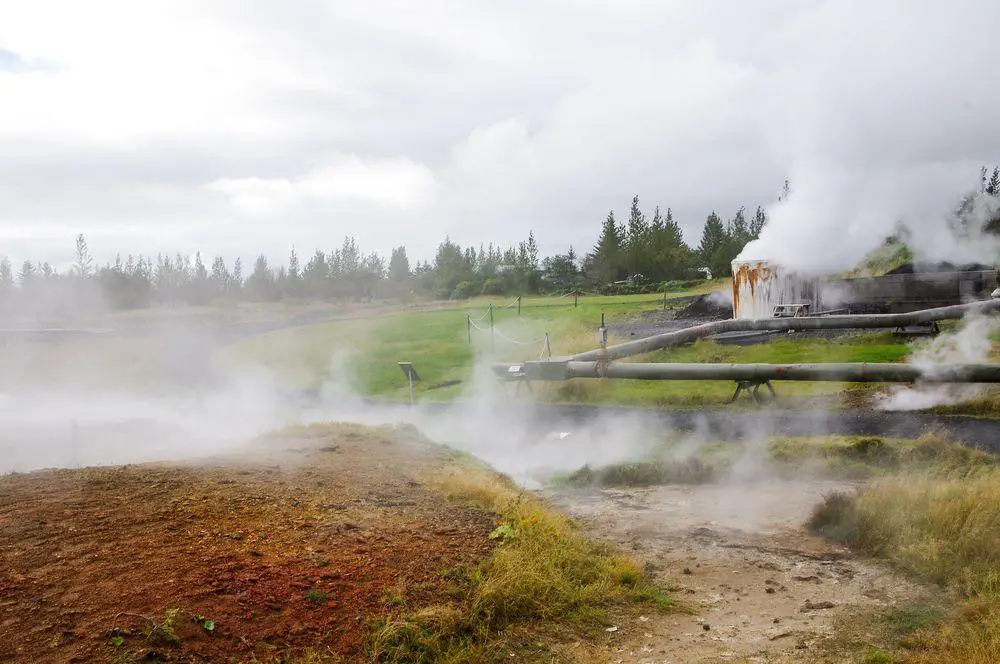
Park includes the following natural attractions:
- Bláhver – “Blue hot spring”. This spring has a pool of deep blue (a bit muddy) water and in earlier times it was much more active.
- Dynkur – “Blowing spring”. This is an “almost” geyser. Currently, this is a steam vent but earlier it was erupting a fine spray of water.
- Eilífur – “The eternal one, everlasting”. A geyser that erupts on a regular basis, every 20 – 25 minutes. Wondermondo is looking for some more information about this feature because before 2016 there was no active geyser in this location, but now: there is “the eternal one”!
- Gróuhver – named after Gróa Þordardóttir who lived nearby. This former hot spring is weak now.
- Manndrápshver – “Man killing hot spring”. Here during the night in 1906 fell a local resident and died from scalding. After this tragedy locals installed the street lighting.
- Önnuhver, also Ruslahver – “Busy hot spring” or “garbage hot spring”. Locals for many years threw their garbage in this spring but after an earthquake in 1947, the spring turned into a geyser. It returned all the trash with noisy, wild explosions and locals had to find another place for it. Now here is just a dry hole.
Icelandic scientists are looking into the ecosystem of the Hveragerði hot springs – here is made the research of heat-resistant ecosystems and biochemistry.
References
- Dirk Niemann, Hveragerði and Grændalur, Volcanic Springs. Accessed on June 25, 2019.
Hverasvæðið – Hveragerði Geothermal Park is included in the following article:
 Linked articles
Linked articles
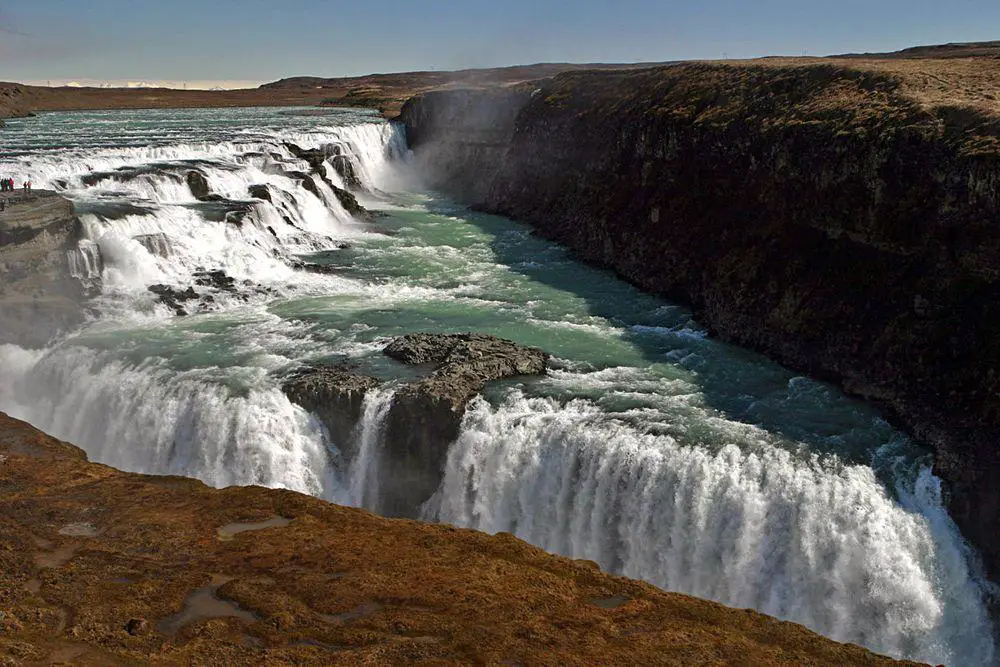
Wonders of Iceland
Iceland is very rich with peculiar natural landmarks and the island contains also interesting cultural landmarks. The highlights of Iceland are the magnificent waterfalls as well as geysers and other geothermal features.
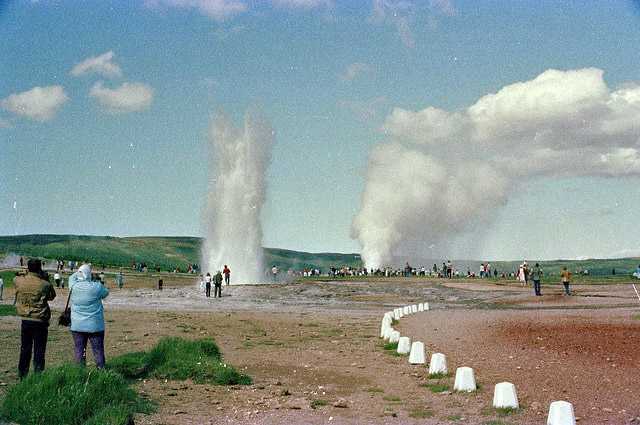
Geysers
Hasty hydrogeologists would say: geysers are thermodynamically and hydrodynamically unstable hot springs. “Normal” people would say – geysers are hot springs that at more or less regular intervals shoot up a fountain of boiling water and steam. Sometimes these fountains are even 100 m tall… or even 450 m!
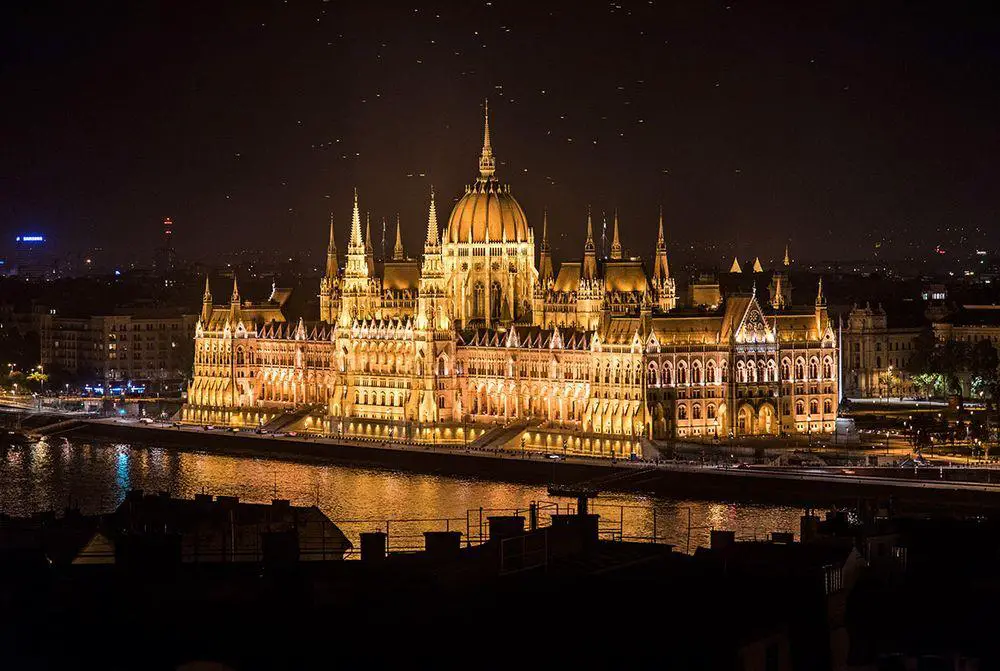
Wonders of Europe
The heritage of Europe is diverse and endlessly interesting. Incomparably rich is the wealth of European historical architecture, but this part of the world has exciting natural heritage and archaeological heritage as well.
 Recommended books
Recommended books
Iceland Travel Guide
Iceland Travel Guide Introduction This book includes all the necessary links for an easy journey to your Icelandic adventure. To make your Iceland travel more entertaining and full of all of the things that you want, you’ll see a step-by-step route around the entire country, indicating the distance in miles, accommodations, recreation, entertainment, shopping, and much more. This Iceland travel guide will be the perfect companion to see all of the hottest spots, like Blue Lagoon, Iceland, and other must-sees.
The Glorious Geology of Iceland’s Golden Circle
This is the first book describing the glorious geology of Iceland’s Golden Circle and four additional excursions:(1) the beautiful valleys and mountains of the fjord of Hvalfjördur, (2) the unique landscape and geothermal fields of the Hengill Volcano, (3) the explosion craters, volcanic fissures, and lava fields of the Reykjanes Peninsula, and (4) the volcanoes (Hekla, Eyjafjallajökull, Katla), waterfalls, sandur plains, and rock columns of South Iceland. The Golden Circle offers a unique opportunity to observe and understand many of our planet’s forces in action.



